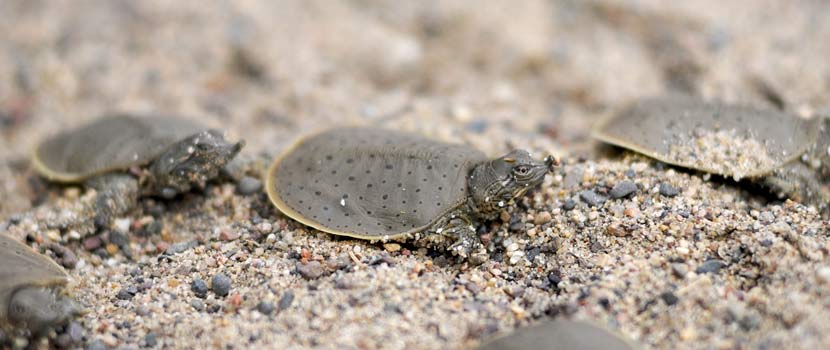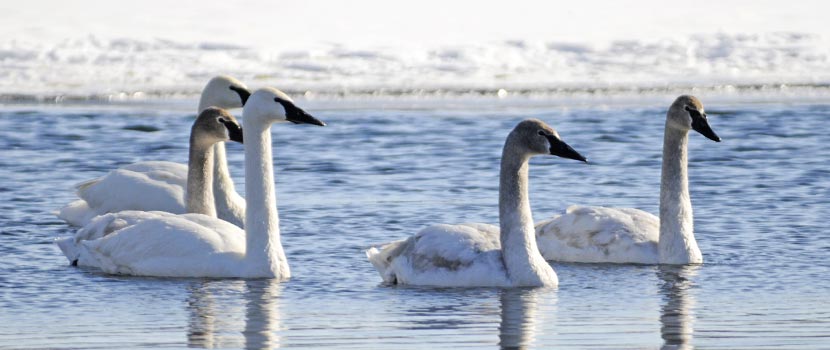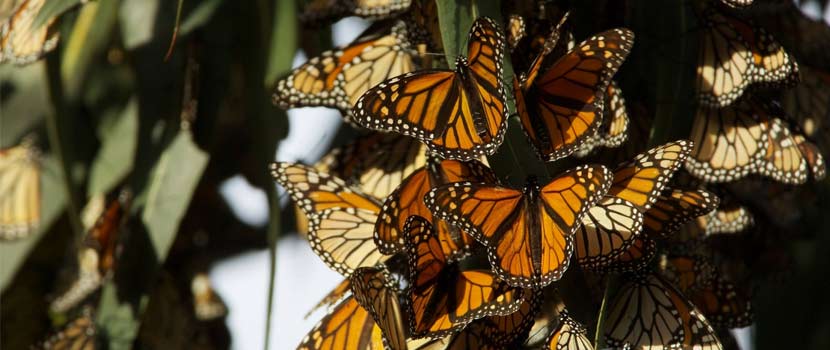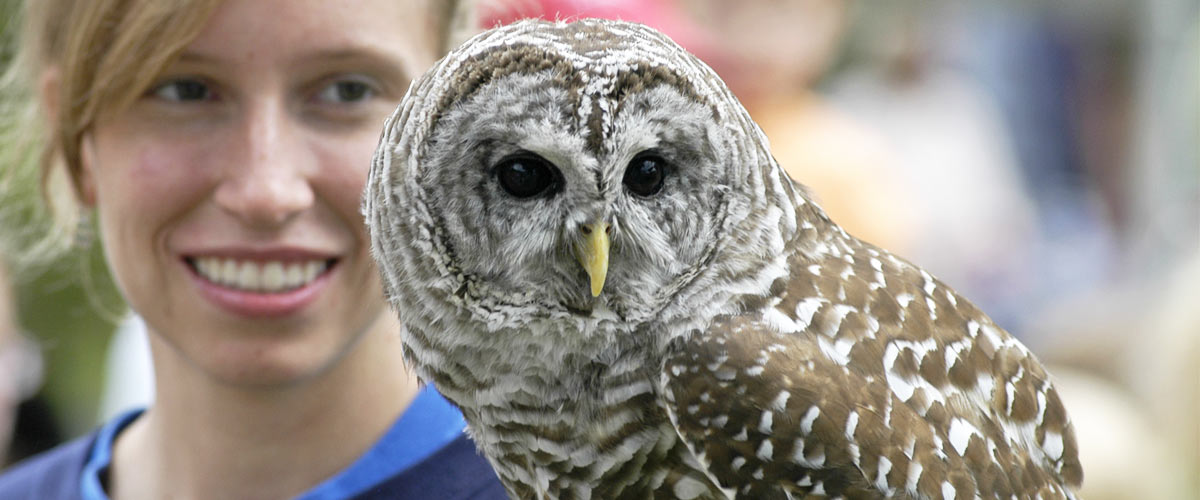
Owls are rarely seen in Three Rivers Park District because they are nocturnal and normally only active at night when there are few people in the park. There are 10 species of owls (see table below) that have been found in our parks. Most of them are only seen during the winter and, even then, not very often. Boreal and Northern Hawk Owls have only been seen once each during the last 25 years.
Northern Saw-whet Owls
Northern Saw-whet Owls have not been found nesting in the parks, though there are recent nesting reports from Anoka and Ramsey Counties. They do migrate through the parks in the fall. An ongoing banding study in Carver Park Reserve by the North Central Bird Observatory catches up to 20 owls a night and 128 for the season. The banding takes place in October and November.
Great Horned Owls
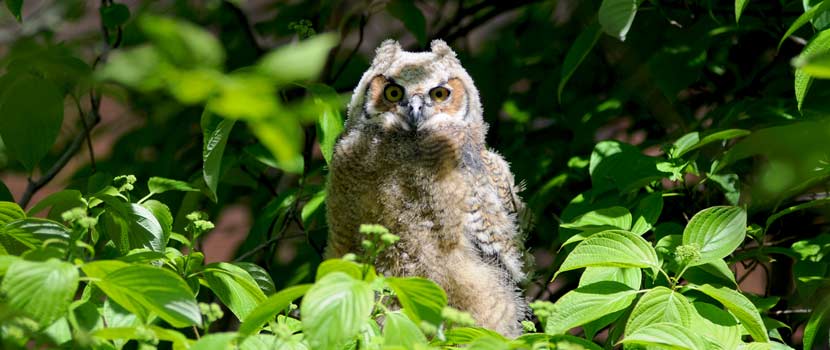
Of the three species that nest in the parks, the one most commonly seen or heard is the Great Horned Owl. They are an interesting owl in that they start their breeding season in the middle of the winter! They begin calling in January and spend February and early March sitting on eggs. It takes just over 30 days for the eggs to hatch. The chicks then stay in the nest for 6 to 8 weeks and are flying by the time they are 10 weeks old.
Great Horned Owls do not make their own nests. The will use nests from other birds, including Great Blue Herons, Red-tailed Hawks, and Bald Eagles. By nesting early they can take over the nest before the other birds return from migration. They will also use squirrel nests, in hollow trees, and specially-built nesting boxes. Three Rivers used to install owl nest boxes, but we found out they were not used much because there are adequate natural sites, so we have stopped using them.
Great Horned Owls can be very tolerant of people. A pair of owls nested along a trail in Silverwood for several years. People were walking within 10 feet of their nest tree with some photographers getting much closer. The owls didn’t seem to care, but it caused some stress for the people watching the owls. There were a number of opinions, some loudly given, about how close people should get to the owlets. Last year the owls nested in a different part of the park and did not have the visibility of earlier years.

Photo by Mike Williams.
Great Horned Owls are the heaviest owl regularly found in the parks weighing in at over 3 pounds. In owls and a number of other bird species, the females are larger than the males. The only North American owl heavier than Great Horns is the Snowy Owl where a female can top 4 pounds.
The size of the Great Horned Owl allows it to catch larger prey than other owls. Great Horned Owls will regularly catch and eat squirrels, rabbits, and skunks. They have also been reported capturing cats, which is another reason to keep your cat inside, especially at night.
This Wednesday, tune into the Three Rivers podcast, The Wandering Naturalist, and discover more about owls and their adaptations to survive in the winter.
Learn new conversation starters and be the first to know about future blog posts by subscribing below.
About the Author
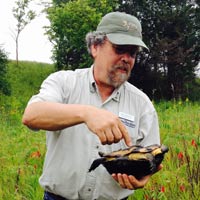
John Moriarty is the Senior Manager of Wildlife at Three Rivers Park District and has been with the Park District for 15 years. He has been involved in many of the wildlife restoration efforts and initiated the snake and butterfly efforts. John has led several projects to increase prairie habitat in the Park District. John likes exploring natural areas and looking for all types of plants and animals, but especially turtles.
Related Blog Posts
9 Things We Learned from the Medicine Lake Urban Turtle Project
By: John Moriarty
Where do spiny softshell turtles go after nesting on the beach at French Regional Park? How far do softshell, painted and snapping turtles travel in the water? Are they active in winter or affected by water quality? Find out what we learned during the Medicine Lake urban turtle project.
Reintroducing Wildlife at Three Rivers
By: John Moriarty
What do trumpeter swans, regal fritillary butterflies and bullsnakes have in common? All were reintroduced into Three Rivers parks. Read about what goes into reintroducing a species and discover what others were successfully reintroduced — some might surprise you!
Pollinators: The Great Monarch Migration
By: Elaine Tucker
Have you ever wondered what a monarch tag is or why we tag monarch butterflies? Read on to discover more about these beautiful insects and their incredible 2,000-mile migration.
